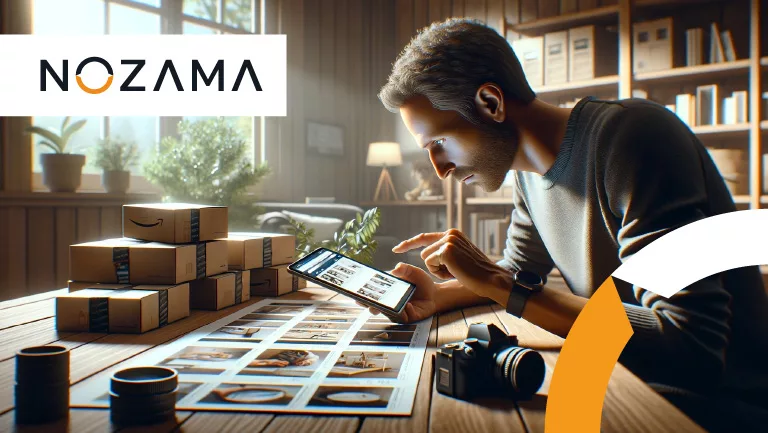
20 Dec 5 Tips to Optimize Your Images on Amazon
- Optimize your images on Amazon and offer quality photographs that attract, inform, and faithfully represent the product you’re selling.
- Take care of fundamental aspects such as name, keywords, size, format, or color so that your images are displayed correctly on the platform.
Images have been proven to directly influence the success of your sales. On the one hand, they serve as a lure to attract the attention of your potential buyers and, on the other, they clearly represent what the product you sell is like.
In online shopping, the customer doesn’t have the possibility to see your product as they would in a physical store. The purchase decision is highly influenced by the images you offer of your products. Hence the importance of optimizing them before publishing them on any e-commerce or marketplace such as Amazon.
5 Tips to Optimize Your Images on Amazon
Here are some tips to help you achieve this.
Name your images correctly and add keywords:
When you are going to publish your product images on any digital platform, including Amazon, we recommend that you name them clearly and descriptively. Keep in mind that the images you add to your A+ pages or stores are saved in your own library stored in the cloud. If they’re properly named, you’ll find it easier to locate them when you need to use them again.
In addition to naming your images correctly, it’s important to include some keywords in them. Keywords will help you rank your product within its category and rank it higher in search results on Amazon.
Take care of the main image of your product on Amazon:
The best thing to do is to include seven images per product, but taking care of and complying with the requirements that Amazon establishes for the first of them is essential for your listing to remain active and to attract your potential buyers.
Amazon requires that 92% to 98% of your product be displayed in the main image and that your product be displayed on a white background. The article should take up most of the frame. Avoid leaving too much white space around your product because Amazon will automatically crop and adjust the dimensions of your photograph, detracting from the definition of the image.
For certain products, such as furniture, it will be essential that you include the measurements in the images or that you create a real scale or reference on their dimensions. For other items such as food supplements, it will be essential to show their latest version or packaging.
Make sure they’re the right size:
As is the case with Google, Amazon penalizes pages that, due to their high weight, take longer to load and display content to the user, as they would not be offering an optimal browsing experience.
You will need to optimize the size of your images according to the measurements that Amazon recommends in each case to prevent them from becoming pixelated or too heavy. Although the platform makes it easier for you to optimize in stores or A+ by lowering the weight of your images without affecting their quality, this is not the case on the detail pages of your products.
Amazon will require that the resolution of the images you embed on the detail page be at least 1000 x 1000 pixels and a maximum of 2000 x 2000 pixels. In this way, the platform will be able to enable the automatic zoom option so that the products can be seen in greater detail, if the customer wishes.
Choose the recommended compression format
Compression formats also affect the quality and display of photos. In this sense, it is advisable to work with accepted formats that can be processed in most browsers and digital platforms.
Amazon wants to make sure that all of its customers can get a good look at your product, so they recommend that you upload your images on .jpg or .jpeg. This format is universal and offers the best ratio in terms of size and quality of the photograph.
Pay attention to their color system:
Another fundamental factor to optimize your images on Amazon is to adapt its color system to the channel you are going to use in each case. You should know that there are three main different color profiles, CMYK, RGB, and sRGB, and each of them is meant for a specific use. Use RGB or sRGB to share your images on digital media.
Note that while the RGB color profile has a wider look and allows for greater color transitions than sRGB, it can only be processed by certain monitors.
Amazon will therefore display your photos in an sRGB color system, the supported standard for all digital devices used in everyday environments.
If you don’t properly optimize the color system and upload your product images in CMYK or RGB, Amazon will automatically convert them to sRGB, and depending on the type of image, the colors may not look exactly as you uploaded them.
In addition to meeting these five tips, your images should always be as clear, descriptive, and realistic as possible. It instills confidence in the customer and helps them understand what the product they purchase will really look like. Avoid photographs that may lead to misleading or confusion and provide as much credibility as possible.
At Nozama we can help you choose the most relevant images for each type of product and optimize them before publishing them. If these 5 tips to optimize your images on Amazon have helped you, you will be interested in how to improve your product pages on Amazon with videos.


